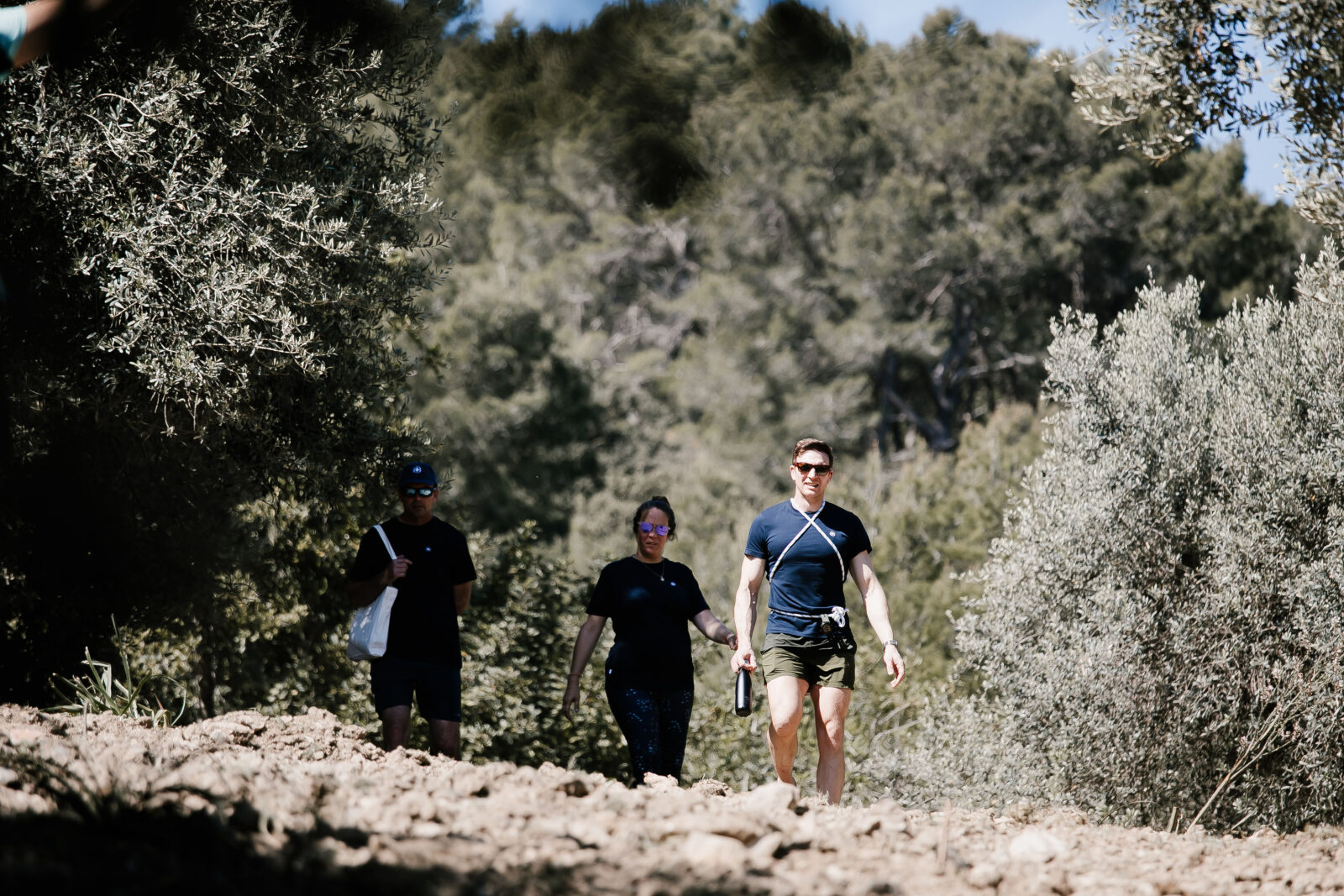
Can a group of individuals, each with unique talents, truly become more than the sum of their parts? In leadership settings, group synergy challenges traditional notions of individual brilliance, suggesting that the collective can achieve unparalleled efficacy. This article delves into the complexities of group synergy, examining how synchronised team dynamics, aligned through effective leadership styles, can propel organisations forward. Through understanding and fostering these dynamics, leaders can unlock latent potential, ensuring that their teams are both cohesive and highly productive. Explore how synergy is not just a concept, but a vital component of leadership success.
Understanding Group Synergy in Leadership
Group synergy in leadership epitomises the phenomenon where the collective efforts of a team surpass the mere sum of individual contributions, represented by the equation 1 + 1 > 2. This concept emphasises the integral role of cooperative interaction, where team dynamics and leadership styles coalesce to amplify performance and innovation. In practice, group synergy requires team members to be in sync, seamlessly communicating and collaborating to align with shared objectives. This synchronisation is paramount in fostering an environment where creativity and efficiency thrive, ultimately leading to enhanced outcomes.
The significance of group synergy in achieving organisational goals cannot be overstated. Synergy is a critical component in cultivating a positive workplace culture, where each member’s input is valued, and collective success is prioritised. The role of leadership is pivotal in orchestrating this synergy, as effective leaders leverage team dynamics to align member efforts towards common objectives. By fostering an atmosphere of trust and mutual respect, leaders can ensure that the team operates at its highest potential, driving productivity and innovation across the organisation.
- Trust among team members
- Mutual respect for individual contributions
- Clear communication channels
- Complementary skills and roles
- Shared goals and vision
.
Benefits of Group Synergy for Leadership Growth
How does synergy contribute to productivity and efficiency? By harnessing the collective strengths of a team, synergy amplifies productivity and efficiency, allowing tasks to be completed with greater speed and precision. This collective approach reduces redundancy, optimises resource allocation, and ensures that all team members work towards a unified goal. The streamlined coordination among team members, facilitated by effective leadership, leads to the seamless execution of tasks, enhancing overall organisational performance.
In terms of problem-solving, group synergy excels by integrating diverse perspectives, which is crucial for innovation. When team members bring varied experiences and viewpoints to the table, they can tackle complex problems more creatively and effectively. How does this diversity benefit leadership? It empowers leaders to make informed decisions that reflect a broader range of insights, fostering a culture of inclusivity and adaptability. This diversity-driven approach not only resolves current challenges but also equips the team to anticipate future obstacles.
Group synergy significantly contributes to leadership growth by fostering alignment and trust-building. Leaders who cultivate synergy create environments where team members feel valued and respected, strengthening interpersonal trust. This trust is foundational for aligning team efforts towards shared objectives, facilitating cohesive strategies and smoother implementation. How does this alignment benefit leaders? It enhances their effectiveness by ensuring that all team members are committed to the vision, thereby driving the organisation forward with unified momentum.
Strategies to Foster Group Synergy in Leadership Settings

What role does a team charter play in fostering group synergy? A team charter, alongside a clear mission statement, is pivotal in aligning team members with shared objectives and values. By defining the team’s purpose, goals, and operational guidelines, a charter establishes a common understanding that guides decision-making and actions. This strategic framework fosters a cohesive environment where all members are aware of their contributions towards the collective aim. Leaders who employ a team charter effectively ensure that all efforts are synchronised, reducing misalignment and enhancing overall synergy.
Team-building exercises are another crucial component in cultivating group synergy. These activities provide opportunities for team members to build relationships and enhance trust outside of the traditional work setting. By engaging in collaborative challenges, members develop a deeper understanding of each other’s strengths and weaknesses, which is essential for effective teamwork. How do these exercises impact team dynamics? They break down barriers, promote open communication, and encourage mutual respect, all of which are vital for a synergistic team environment. Leaders should prioritise regular team-building initiatives to maintain a high level of cooperation and morale.
Regular feedback loops and trust-building techniques are indispensable for sustaining group synergy. Continuous feedback fosters an atmosphere of open dialogue, where team members feel heard and valued. By implementing structured feedback sessions, leaders can address issues promptly and reinforce positive behaviours. Trust-building is equally important, as it underpins effective communication and collaboration. Techniques such as active listening, transparency, and accountability are essential for cultivating trust within the team. How do these efforts translate into synergy? They create a supportive environment where team members are empowered to contribute their best, driving collective success.
- Conduct regular training sessions to enhance skills
- Define clear roles and responsibilities to prevent confusion
- Maintain consistent communication loops for transparency
- Encourage collaborative decision-making processes
- Utilise effective communication strategies to minimise misunderstandings
- Implement trust-building exercises to strengthen team cohesion
.
Real-World Examples and Case Studies of Group Synergy
Cross-functional collaboration epitomises the power of team synergy, where diverse departments or teams unite to achieve objectives that transcend individual capabilities. How does this collaboration manifest in practice? By integrating skills and perspectives from different areas, such as marketing and sales, organisations can develop comprehensive strategies that address multifaceted challenges. This approach not only enhances problem-solving capabilities but also drives innovation, as team members contribute unique insights and expertise. The seamless integration of functions fosters a culture of cooperation, where the collective effort significantly amplifies the impact of initiatives, thereby unlocking potential that individual teams might not realise on their own.
In examining successful synergy within organisations, case studies provide invaluable insights into how strategic alignment can elevate team performance. Consider a tech company that leveraged cross-departmental teams to streamline their product development process. By aligning research, development, and customer service teams under a unified vision, they accelerated the innovation cycle and improved customer satisfaction. What role does leadership play in this context? Effective leadership ensures that all team members are aligned with the organisation’s goals, facilitating a shared understanding that enhances coordination and efficiency. Such alignment serves as a catalyst for achieving exceptional performance, demonstrating the transformative power of group synergy.
Strategic alignment is fundamental to realising the full potential of group synergy. How is this alignment achieved? Through clear communication of organisational vision and goals, leaders can ensure that each team member understands their role within the larger framework. This clarity fosters a sense of purpose and commitment, motivating teams to collaborate towards common objectives. By maintaining alignment, organisations can harness the collective strengths of their teams, leading to sustained success and growth. Leaders who prioritise strategic alignment not only optimise team dynamics but also cultivate an environment where innovation and productivity thrive, solidifying the foundation for long-term achievement.
Overcoming Challenges to Group Synergy in Leadership
What are the common challenges to achieving group synergy in leadership? Managing diverse personalities and overcoming communication barriers are among the most prevalent obstacles. The precision lies in recognising that diverse personalities can lead to misunderstandings and conflicts if not managed effectively. Communication barriers, whether due to cultural differences or varying communication styles, can further compound these challenges, hindering the seamless exchange of ideas. These issues can disrupt the flow of synergy within a team, limiting their ability to function as a cohesive unit. Therefore, addressing these challenges is critical for maintaining synergy and ensuring that the team collaborates effectively towards shared goals.
Leadership plays a pivotal role in overcoming these obstacles by anticipating potential issues and implementing strategies to address them. Effective leaders employ conflict resolution strategies to mediate disputes and foster an environment of mutual respect. They also embrace adaptive leadership techniques to adjust their management style according to the unique needs of their team. How does this benefit the team? By promoting an atmosphere of open communication and inclusivity, leaders can bridge gaps in understanding and facilitate a more collaborative work environment. This approach not only resolves current challenges but also equips the team to tackle future obstacles with resilience and agility.
- Implement conflict resolution strategies to address disputes
- Develop adaptive leadership practices to cater to diverse team needs
- Foster open communication channels to overcome barriers
- Encourage inclusivity and mutual respect to build a cohesive team
.
Final Words
Realising group synergy in leadership entails recognising the synergistic potential embedded within a team, wherein 1 + 1 > 2 symbolises cooperative strength. Synergy improves productivity and problem-solving while facilitating leadership growth through alignment and shared purpose. Implementing strategies such as a team charter, trust-building exercises, and effective communication fosters these dynamics.
Real-world examples illustrate successful synergy and strategic alignment in organisations. Overcoming challenges, like diverse personalities and communication barriers, requires adaptive approaches. Embracing group synergy elevates leadership effectiveness, enriching collective output and achieving organisational goals. The potential for transformative leadership within synergised teams heralds a promising horizon.
FAQ
What is group synergy?
Group synergy occurs when the collective effort of a team produces a result greater than the sum of individual contributions. This cooperative interaction enhances productivity and fosters organisational success.
Why is group synergy important in leadership?
Group synergy is vital for leaders to achieve organisational objectives. It aligns team members toward common goals, encourages efficient collaboration, and fosters a supportive and positive workplace culture.
What is an example of team synergy?
An example of team synergy can be observed when a marketing and sales department collaborates cross-functionally to achieve shared targets, leading to heightened performance and accomplishment.
How do you build team synergy?
Building team synergy involves establishing trust and mutual respect, maintaining open communication, and setting shared objectives. Implementing team-building exercises and clear role definitions further supports synergy development.
What are the constraints to team synergy and decision-making?
Constraints to achieving team synergy include communication barriers, diverse personalities, and potential conflicts. Addressing these requires effective conflict resolution strategies and adaptive leadership approaches.
What does building synergy mean?
Building synergy entails creating an environment where team members collaborate effectively, leveraging their strengths to produce superior outcomes and meet organisational goals.
How can synergy improve teamwork?
Synergy enhances teamwork by integrating diverse perspectives into the problem-solving process, improving productivity, and fostering a culture of collaboration and mutual support. This, in turn, contributes to leadership growth and success.
What are some quotes about team synergy?
There are various quotes highlighting the importance of team synergy, such as, “Alone we can do so little; together we can do so much,” which encapsulates the power of collaborative effort.


